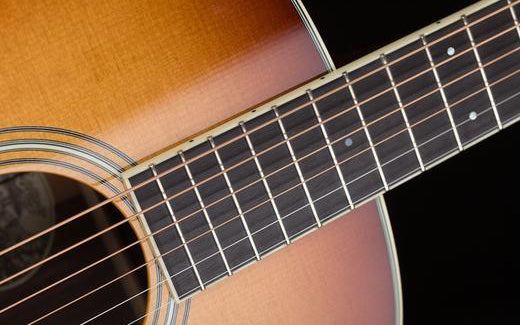
Every handcrafted guitar is designed, built, and voiced for a specific calculation of string tension based on the scale length, string gauges, and sound board material. Each of these elements are a consideration in the build technique with one common consideration – exclusive use of standard pitch tuning.
That said, it is not uncommon (regardless of guitar brand), to have strings “fall out” of a mix when lowered beyond a certain threshold, where there is insufficient tension to drive the top.
For instance, given an acoustic guitar with a standard common scale length of 25.5, using a string set .012-.054, delivers 173.5 lbs. of tension at standard pitch (*). Switching to DADGAD will lower the overall tension to 156.9 lbs. (nearly 17 lbs. less). That’s when you will likely experience “fret buzz” and things “can get thumpy”.
Notes from strings you heard at standard pitch sound diminished in presence when the string tension is dropped. What’s the solution?...
Have you ever used an online string tension calculator? This handy tool can assist you in choosing an alternate gauge string that produces the same amount of tension at a varied pitch:
String Joy Tension Calculator
This is essential to understand how to get more out of your guitar when using non-standard tunings. We use it for various instruments, including custom tunings for standard guitars, but also baritones and small parlor guitars.
If you want the most sound from your guitar, consider maintaining the overall total string tension the luthier intended when it was built. If you need help navigating the string tension thing for custom tunings, give us a ring.
(*) String Joy online tension calculator used for the calculations above reflect the String Joy brand of strings made right here in Nashville. Different brands of strings have different tensions, based on the weight of the material(s) used to manufacture the strings.
That said, it is not uncommon (regardless of guitar brand), to have strings “fall out” of a mix when lowered beyond a certain threshold, where there is insufficient tension to drive the top.
For instance, given an acoustic guitar with a standard common scale length of 25.5, using a string set .012-.054, delivers 173.5 lbs. of tension at standard pitch (*). Switching to DADGAD will lower the overall tension to 156.9 lbs. (nearly 17 lbs. less). That’s when you will likely experience “fret buzz” and things “can get thumpy”.
Notes from strings you heard at standard pitch sound diminished in presence when the string tension is dropped. What’s the solution?...
Have you ever used an online string tension calculator? This handy tool can assist you in choosing an alternate gauge string that produces the same amount of tension at a varied pitch:
String Joy Tension Calculator
This is essential to understand how to get more out of your guitar when using non-standard tunings. We use it for various instruments, including custom tunings for standard guitars, but also baritones and small parlor guitars.
If you want the most sound from your guitar, consider maintaining the overall total string tension the luthier intended when it was built. If you need help navigating the string tension thing for custom tunings, give us a ring.
(*) String Joy online tension calculator used for the calculations above reflect the String Joy brand of strings made right here in Nashville. Different brands of strings have different tensions, based on the weight of the material(s) used to manufacture the strings.


